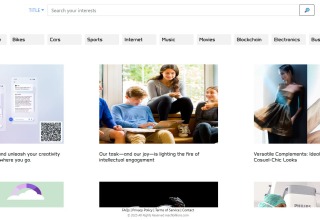When most people hear “AI” and “roads,” their first thought is usually self-driving cars. While this is one application of AI on the road, it is not the only one. There is also advance notice of vulnerable pedestrians, arranging priority to emergency vehicles, monitoring how roads become distressed, and so on. This article intends to cover the many ways that mass collection of user data is being implemented to make roads safer.
Detecting Vulnerable Parties
AI can be used to sense, organize, and track every party on the road, and prolong green lights to allow large groups of non-vehicular uses to cross. It can also warn motor vehicles about vulnerable people on the road and sharpen their drivers’ awareness. These mechanisms allow traffic workers to adjust their approaches and augment existing traffic management systems. Lastly, these features can help self-driving vehicles by giving them more data to compute while on the road.
Prioritizing Emergency Services
A route-switching mechanism that has been tested in Linz, Austria, gives emergency services the ability to send out a signal from their control centers. This signal then optimizes the safest route for rescue vehicles, especially when they may need to pass through a city or take a highway. Given the urgency that emergency vehicles require when they answer a call, every option that improves speed while preserving safety matters. This signal helps to complement the sirens and lights that drivers can react to. In short, this is a technology that helps all.
Using Simulations to Predict Chaos
By combining historical records with real-time observation, AI can assess future traffic issues based on metrics like time, locations, type of accident, or road closures. Furthermore, it is also possible to control traffic flow in dedicated areas by informing drivers about traffic issues, air quality, and the relationship between traffic and air quality.
Identifying Pavement Distress
One interesting application of AI in the pursuit of safer roads would be assessing the quality of pavement. There are few driving experiences more distressing and common than motoring over some pavement that is far removed from good condition. One research team started analyzing troubled pavement by using HD images to assess patches that already seemed to be suffering from distress but their efforts at reaching a conclusion were stymied by imaging and efficiency issues. By applying one form of AI to the project, they could generate the image of pavement on a large scale as a triple-layered pyramid. These findings allowed them to gain a greater means of assessing the start of cracks and flaws in the pavement. Before AI became a popular tech enterprise, recognizing distressed and compromised pavement was a manual task left to professionals that entailed a sizable labor investment and in-depth knowledge of the area. Because roadways have become so complex and sprawling, this sort of assessment was nearly impossible to achieve using those old methods. Now, civil engineers can leave this analysis automated by an AI while they focus on minimizing future pavement distress and fixing distress in play.
Civil Planning
One last sector worth mentioning, and one with some overlap with the other predictions, concerns the construction of new roads. By running simulations of a potential road through conditions, such as holiday traffic, rush hour, the number of lanes, where an off- or on-ramp is located along that road, et cetera, city planners can better asses just how severe or safe it will be to drive along that road. Such advance notice can save cities thousands of dollars in mistakes before the road is ever built.
Conclusion
With more cars on American roads than ever before, there is more congestion, more accidents, and more wear and tear on our roads. Safety should always be our top priority. With nearly 4,500 traffic fatalities in 2022 in California alone, improvements in technology could save countless lives. New tactics must be found to control traffic, improve safety, and maintain roads. Turning to AI is one way we can achieve optimal conditions for all road users.























